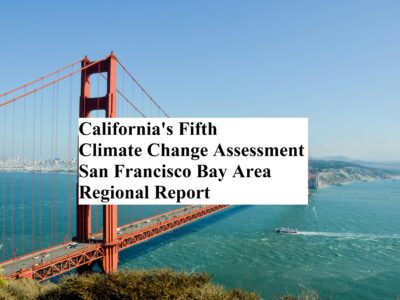The Carbon Tax — More Attractive Than Ever
Due to the latest tax bill, a carbon tax look like a great strategy when the Dems take power again.
Sooner or later, the Democrats will take control of Congress and the White House, just like the Republicans right now. That’s not a political prediction so much as a recognition that the wheel is bound to turn around at some point. At that point, they should give very serious consideration to the possibility of a carbon tax. Recent experience with the GOP’s massive tax cut has made the carbon tax more appealing for three reasons: (1) the government will need extra revenue, (2) we’ve learned about the benefits of the reconciliation procedure in Congress, and (3) the carbon tax can be portrayed as a correction for the severe recent cuts to corporate taxes.
It’s certainly open to question whether a carbon tax is the ideal policy tool. It has some policy strengths, especially its simplicity, but there are also arguments for using cap and trade. Either one would be regressive in the absence of some mechanism for redistributing the proceeds. As a recent paper by an international team of economists shows, however, the carbon taxes already in effect in nearly twenty jurisdictions generally have cut carbon emissions as promised, and have been more effective than cap-and-trade systems.
The biggest problem has been the public’s aversion to imposing new taxes or raising existing ones. But a carbon tax has some advantages that may outweigh that political difficulty.
First, the Democrats are going to need a source of money. The government already has a large deficit, and virtually every expert thinks the tax bill will add at least another trillion dollars to the deficit over a decade. Eventually, whoever is in power is going to have to address the deficit issue. And the Democrats are going to want to increase spending on infrastructure and social programs, increasing the need for revenue. The great thing about a carbon tax from this perspective is simply that it will bring in money. It’s also helpful that it’s a tax paid by businesses, not individuals.
Second, a carbon tax would face an easier procedural path than a regulatory law or a cap-and-trade scheme. As the GOP amply proved with their tax cut bill, reconciliation bills provide a viable way around the 60-vote requirement in the Senate. It was that requirement that sunk the Waxman-Markey cap-and-trade bill. It’s conceivable that a cap-and-trade bill with auctioned allowances could qualify for reconciliation. But a pure tax measure would be more likely to pass muster with the Senate Parliamentarian as a revenue measure.
Third, a key part of the GOP bill was a huge cut in the corporate tax. That’s not very popular with the public. The carbon tax could be pitched as a replacement for part of the lost corporate tax levels. Instead of calling it a carbon tax, it could be call corporate emissions tax and sold that way.
Tax increases have been a taboo subject in American politics, but that could be changing. Consider the example of Kansas, where Sam Brownback pioneered the massive tax cut approach that has now become national. Eventually, the situation became bad enough that even Republicans voted to raise taxes. And if we’re going to need a tax increase of some kind, a corporate carbon tax would be a win-win — good for the budget and good for the planet.
Reader Comments
9 Replies to “The Carbon Tax — More Attractive Than Ever”
Comments are closed.







Unfortunately we have seen too many instances where carbon taxes have not been efficacious. Just to the north, in British Columbia, emissions actually increased under a carbon tax. Our friends from Food and Water Watch have written excellent pieces demonstrating the ineffectiveness of carbon taxes, including this piece: https://www.foodandwaterwatch.org/insight/clearing-air-carbon-tax. Further, even the people pushing for this “solution” to the climate crisis don’t seem to have the stomach to implement a carbon price that would actually cut into the bottom line of the Fossil Fuel industry. Taxes at the $15 or $25 level would be perfunctory at best, which is why we see taxes at this level supported by Big Oil corporations like ExxonMobil. Moreover, where is the justice element? The people who are disproportionately choked out by toxic emissions, Black and Brown, low-wealth communities, cannot afford to let market based “solutions” continue to impair their health while historically-white led environmental groups pat each other on the backs for an illusion of action. Last year, Climate Justice Alliance and Indigenous Environmental Network released perhaps one of the best reports of the year http://www.ienearth.org/wp-content/uploads/2017/11/Carbon-Pricing-A-Critical-Perspective-for-Community-Resistance-Online-Version.pdf. That this report did not make it into your analysis is further proof that frontline voices and research are not taken seriously enough and given their due share of notice. And this mode of thinking, that renders the people hit first and worst by the climate crisis and its agents, that continues to view environmental justice as a secondary or tertiary issue, while white Polar Bears get more love than Black and Brown people is why the climate “movement” continues to experience internal and external losses.
All a carbon tax does is say that we will allow the rich to pollute more than the poor.coopted
There is a republican led effort that has at least had an audience with the current President. Their approach voids the extreme penalty on the poor imposed by a carbon tax.
The approach provides the carbon tax stick with a dividend allocated to void the costs impacts on the poor and when combined with PACE financing to provide a carrot, well I can only hope we will have a chance to turn the tide.
http://www.ted.com/talks/ted_halstead_a_climate_solution_where_all_sides_can_win-fee-and-dividend/
Their website is https://www.clcouncil.org/media/TheConservativeCaseforCarbonDividends.pdf
The link connects to a paper “The Conservative Case for Carbon Dividends” authored by:
James A. Baker, III Martin Feldstein Ted Halstead Rob Walton
N. Gregory Mankiw Henry M. Paulson, Jr. George P. Shultz
Thomas Stephenson
PACE or Property Assessed Clean Energy is a relatively new capital structure and it is growing rapidly throughout the United States.PACE is a new form of financing created to capitalize energy expenses in a public private partnership. The public, by allowing use of a special assessment, technically invests 100% of the money as if a sidewalk or sewer were being installed. The property owner agrees to re-pay the public via the assessment. PACE improvements are generally above code and therefore are NOT required. A private lender provides the actual capital. The private lender contracts with the municipality to be repaid from the special assessment collected. By financing energy efficiency this way, businesses are rewarded, not punished by taking extra risks, for using energy resources efficiently. Many times, a business can save more on energy and water than they pay for the assessment thereby improving business profitability.
Since the special assessments can be as long as 25 years and as a tax it can pass through to tenants, just like utilities, and since they survive transfers, sales and foreclosures, and therefore they take market risk for energy efficient improvements out of the equation, PACE is the ideal solution to reducing carbon impacts.
I hope this offers you some encouragement.
.
Provocative article, Dan. Thanks for posting.
Key question for us to consider. What do we care more about – setting a cap on total carbon emissions and then letting market forces figure out what makes the most sense, or setting a flat tax and adjusting it up/down as needed to hope that we can the emissions reductions that we need as a society. I argue that for all of its flaws, cap & trade gives a lot more flexibility to the regulated entities and gives more confidence to the policy makers.
What’s the ultimate goal of imposing a tax? I think it is more than just to collect revenues, especially when correcting for negative impacts to the environment.
Michael — I don’t have a strong preference between cap-and-trade and a carbon tax. The difference is less significant anyway since my current trading schemes have price collars that make them more tax-like. The carbon tax is simpler, but trading systems have other virtues. My advocacy here is mostly based on some political factors that I think might be exploited to get a federal carbon tax passed. But either one is fine with me!
“As a recent paper by an international team of economists shows, however, the carbon taxes already in effect in nearly twenty jurisdictions generally have cut carbon emissions as promised”
I thought emissions had increased in British Columbia despite their carbon tax.
Michael — I don’t have a strong preference between cap-and-trade and a carbon tax. The difference is less significant anyway since my current trading schemes have price collars that make them more tax-like. The carbon tax is simpler, but trading systems have other virtues. My advocacy here is mostly based on some political factors that I think might be exploited to get a federal carbon tax passed. But either one is fine with me!
In terms of British Columbia, it looks like actual emissions went up, unlike some other jurisdictions, but I’m not sure how this compares with the trend under business-as-usual. It’s certainly clear that a carbon tax is no panacea, but it could be one part of the solution.
3 basic points:
1. Cap and trade is junk — attractive as a new source of income for lawyers and accountants- but it doesn’t help cut emissions.
2. A carbon tax is a very good old idea which lacks political support. Speaker Nancy Pelosi pulbicly declared a few years ago she would never allow even a debate on it
3. Note longstanding trillions in global fossil fuel subsidies- a Carbon Tax has to consider these offsetting effects. See IMF, 2015: https://www.imf.org/en/News/Articles/2015/09/28/04/53/sonew070215a
Thanks, Dan, the growing awareness and appeal of a national carbon tax as opposed to cap and trade was most recently on display when 11 major corporations (Exxon, Shell, Total, BP, GM, Unilever, Pepsi, Johnson & Johnson, Schneider Electric, Proctor & Gamble, and Santander) joined together as Founding Members of the Climate Leadership Council.
CLC proposes a $40/ton tax on CO2 emissions, levied upstream where the carbon enters the economy. Their rate of increase is negligible, (2% over inflation) and they propose 100% revenue nuetrality. A somewhat more detailed comparison of their proposal with the similar but more robust proposal from Citizens’ Climate Lobby proposal is at http://bit.ly/2FzUZZv The CCL proposal would raise about $1.2T over the first 7 years.
Dan’s right, it would behoove the Dems (and non-denying Rs) to work together NOW to think through the kinds of climate policy that will re-establish a US leadership role on climate. That way we won’t end up looking the R’s did on healthcare after 8 years of bashing the ACA, but having zero prepared in the way of an alternative.